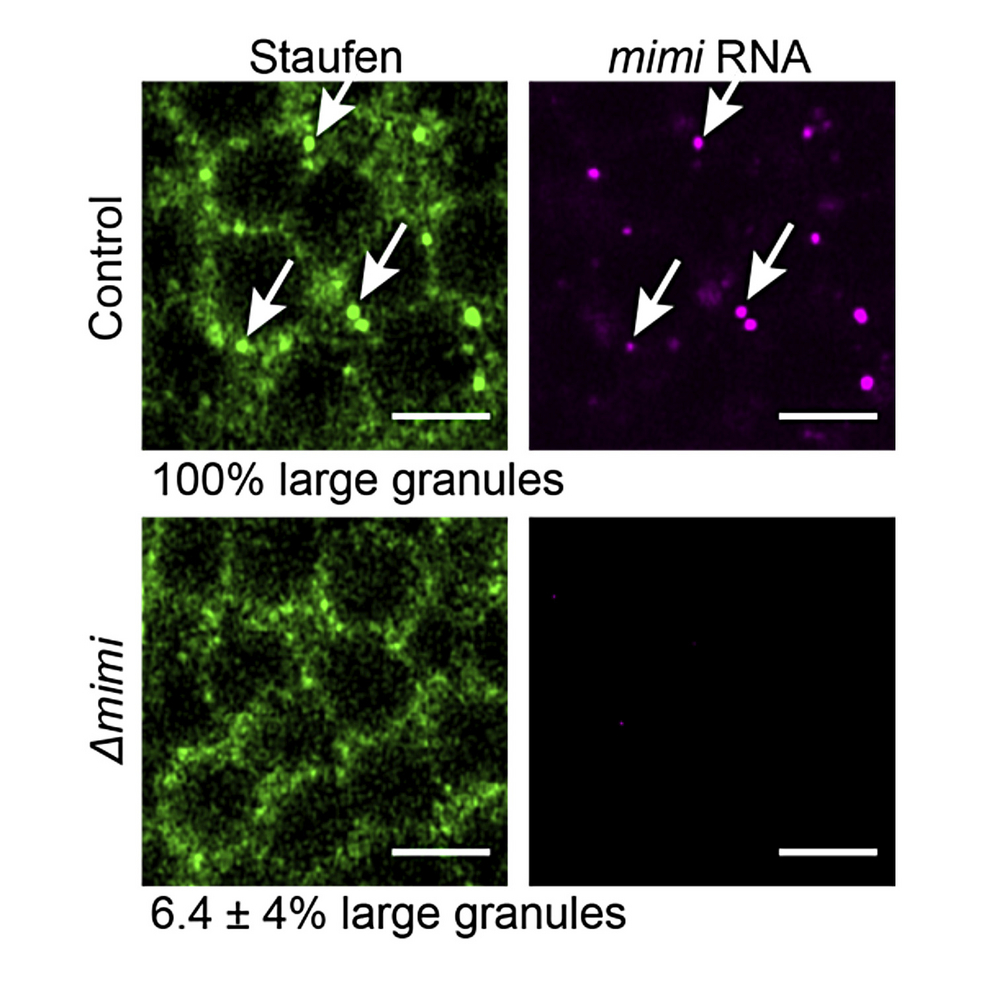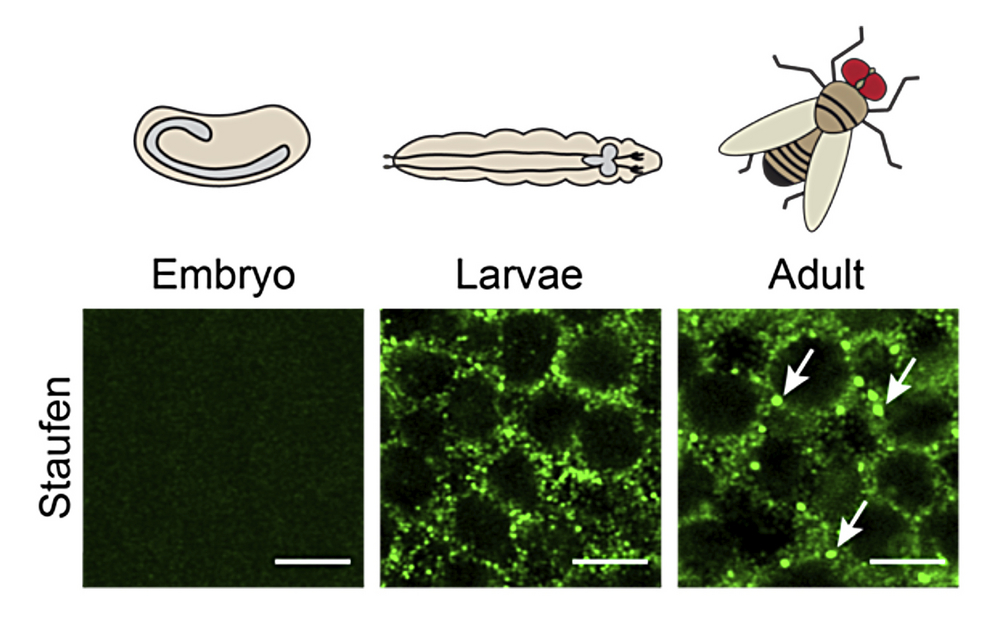Neurons in fruit flies, but also in other organisms, use membrane-less cellular compartments consisting of RNA molecules and proteins to regulate their gene expression and cellular processes. Researchers at the MPI for Immunobiology and Epigenetics and the Cluster of Excellence CIBSS - Centre for Integrative Biological Signalling Studies at the University of Freiburg have now discovered how and when these ribonucleoprotein (RNP) granules form and were able to show that a specific type of RNP granules are crucial for maintaining the maturity of the adult nervous system. These findings in the fruit fly Drosophila melanogster also have relevance for research into neurodegenerative diseases.
The nervous system of any organism is predominantly made up of neurons. During development, neural stem cells divide into neurons, which progressively establish an intricate network of connections. Neurons communicate through this network by sending and receiving electrical signals.
The precise regulation of gene expression is critical for the functioning of neurons in the developing and mature brain, much of which occurs through changing levels or locations of the messenger molecule RNA. Neurons employ various strategies to ensure the robustness of their RNA regulation, including the formation of ribonucleoprotein (RNP) granules. These are membrane-less cellular compartments composed of RNA and RNA-binding proteins that tune time and location of protein expression and affect many cellular processes that require complex protein distribution.
lncRNA mimi as determinant of protein condensation in neurons
Neurons assemble proteins and their associated RNAs into these granules to optimize efficiency and coordinately regulate large sets of transcripts. Interestingly, the deletion of key granule proteins not only causes the disassembly of the granule, but also disrupts other protein functions. “Until now, it was not possible to uncouple the role of neuronal granules per se, from the function of granule-constituent proteins”, says Prof. Dr. Valérie Hilgers, Group leader at MPI of Immunobiology and Epigenetics and CIBSS researcher.
However, using Drosophila melanogaster as a research model, Hilgers lab identified a highly specific and absolutely necessary component of a particularly large and widespread neuronal granule type that can also be found in abundance in the brain of many other animals including humans.
The team named this component mimi, after its discoverer and doctoral researcher in the Hilgers lab, Dominika Grzejda. “When we removed mimi, the formation of the granules was disrupted, but not the expression of major granule-forming proteins,” says Dominika Grzejda, first-author of the study.







